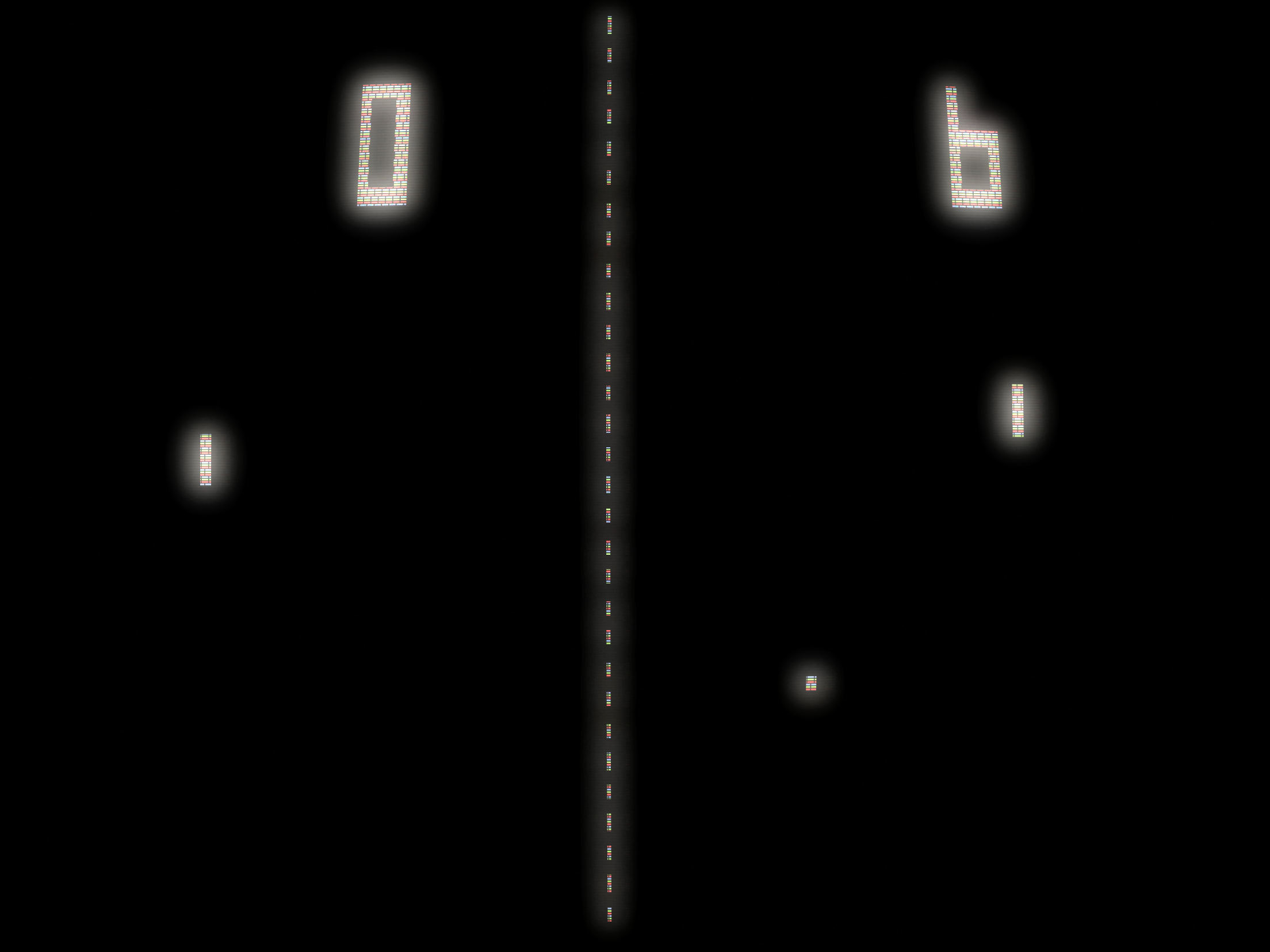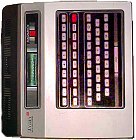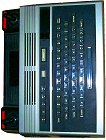Odyssey 200
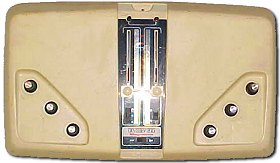 Talk about upscale. The Odyssey 200, released not long after the Odyssey 100, added an extra game to the mix, bringing the machine’s built-in game total up to three. In addition to Tennis and Hockey/Soccer, the Odyssey 200 adds Smash, essentially a vastly simplified game of racquetball. (Magnavox seemed to feel that the extra game – and the slightly more sedate paint job on the casing – merited a whole new unit and model number.)
Talk about upscale. The Odyssey 200, released not long after the Odyssey 100, added an extra game to the mix, bringing the machine’s built-in game total up to three. In addition to Tennis and Hockey/Soccer, the Odyssey 200 adds Smash, essentially a vastly simplified game of racquetball. (Magnavox seemed to feel that the extra game – and the slightly more sedate paint job on the casing – merited a whole new unit and model number.)
Odyssey 100
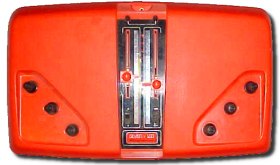 The Game: A simple version of video ping-pong; players use three knobs, one to control horizontal movement, one to control vertical movement, and a third to control the “English” or spin of the ball. (Magnavox, 1975)
The Game: A simple version of video ping-pong; players use three knobs, one to control horizontal movement, one to control vertical movement, and a third to control the “English” or spin of the ball. (Magnavox, 1975)
Memories: Caught flat-footed by the success of Atari‘s Pong home console, Magnavox found itself struggling to hang onto the very market that Ralph Baer‘s original Odyssey console had created in the first place. Perhaps not surprisingly, Magnavox turned back to the Odyssey, not just for inspiration but to – at least in a limited fashion – put the machine back on the market.
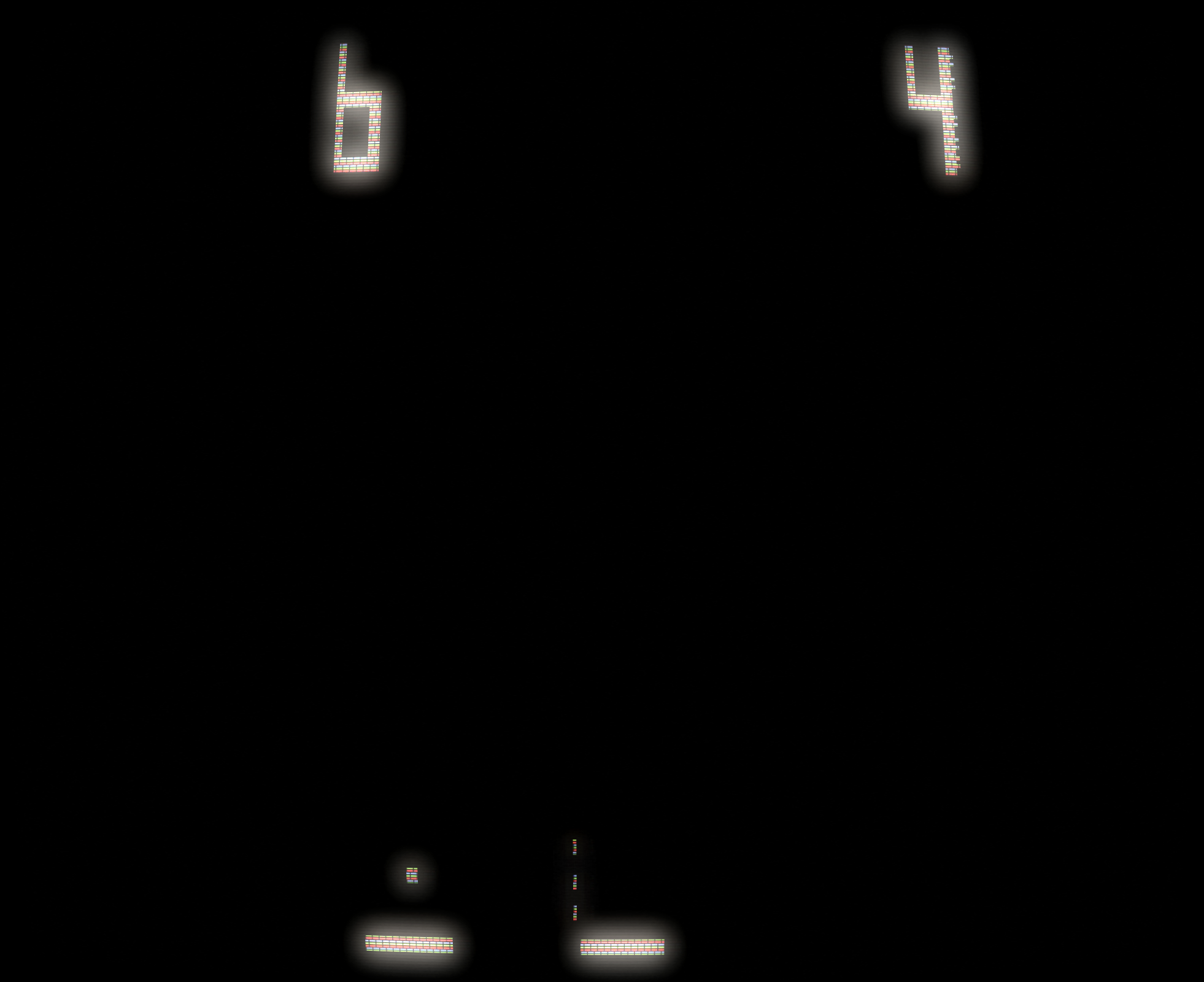
Rebound
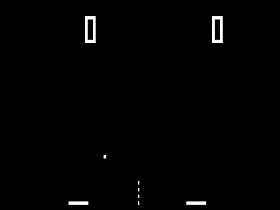 The Game: Live in glorious black & white, it’s the first-ever game of video volleyball! Two players square off – well, okay, rectangle off – against each other as horizontal Pong paddles situated on either side of a dotted-line “net.” The ball drops out of mid-air toward one player or the other, who must move into place to (hopefully) bounce the ball into the right direction. It may take a couple of tries to get the ball over the net, but don’t let it take three bounces or you forfeit a turn (and a point). (Atari, 1973)
The Game: Live in glorious black & white, it’s the first-ever game of video volleyball! Two players square off – well, okay, rectangle off – against each other as horizontal Pong paddles situated on either side of a dotted-line “net.” The ball drops out of mid-air toward one player or the other, who must move into place to (hopefully) bounce the ball into the right direction. It may take a couple of tries to get the ball over the net, but don’t let it take three bounces or you forfeit a turn (and a point). (Atari, 1973)
Memories: Created on a hardware with a very similar architecture to that of Pong, Rebound was Atari’s first attempt to think outside the Pong box. Obviously, there are similarities: Pong paddles stand in for volleyball players, and the ball and “net” graphics are familiar enough to anyone who’s ever laid eyes on Pong. But where Pong only needed to simulate artificial action and reaction, Rebound actually has a tougher job: simulating real live gravity. But Rebound‘s gravity is a bit unpredictable and not quite authentic. Sure, volleyballs have been known to go astray, but Sir Isaac Newton would be left reeling by Rebound‘s first-ever video game simulation of real physical laws.
Odyssey Legacy
 Introduced in 1972 after nearly four years of research, development and marketing, the Magnavox Odyssey was based on the Brown Box TV game prototype designed by inventor Ralph Baer. Baer had been working on devising a way to play interactive games on a television screen since 1966, and completed the Brown Box in 1968. The game was a simple table tennis game, though with an added “English” control which later variations on the same theme (i.e. Pong) omitted. Baer had originally designed a game of “tag” requiring only two player cursors, and also conceived several other variations on familiar games. By the time the Odyssey was released, it was no longer a dedicated ping-pong simulator, but included other games as well, accessible by inserting the right “program card” into a slot on the front of the Odyssey console. (While it’s tempting to call this the forerunner of cartridge-based video games, that would be a misnomer; all of the games were actually native to the Odyssey’s internal circuitry, and the cards merely acted as “keys” to tell the machine which variation of which game was being played.) Eager to parlay the excitement over Odyssey into sales of not only game consoles but television sets, Magnavox made a greedy blunder, leading the public to believe that Odyssey would work only on Magnavox television sets. Despite a successful launch (using none other than Frank Sinatra as a spokesman for Odyssey’s national TV debut), the Magnavox-only maneuver was costly; Odyssey was only in production for two years.
Introduced in 1972 after nearly four years of research, development and marketing, the Magnavox Odyssey was based on the Brown Box TV game prototype designed by inventor Ralph Baer. Baer had been working on devising a way to play interactive games on a television screen since 1966, and completed the Brown Box in 1968. The game was a simple table tennis game, though with an added “English” control which later variations on the same theme (i.e. Pong) omitted. Baer had originally designed a game of “tag” requiring only two player cursors, and also conceived several other variations on familiar games. By the time the Odyssey was released, it was no longer a dedicated ping-pong simulator, but included other games as well, accessible by inserting the right “program card” into a slot on the front of the Odyssey console. (While it’s tempting to call this the forerunner of cartridge-based video games, that would be a misnomer; all of the games were actually native to the Odyssey’s internal circuitry, and the cards merely acted as “keys” to tell the machine which variation of which game was being played.) Eager to parlay the excitement over Odyssey into sales of not only game consoles but television sets, Magnavox made a greedy blunder, leading the public to believe that Odyssey would work only on Magnavox television sets. Despite a successful launch (using none other than Frank Sinatra as a spokesman for Odyssey’s national TV debut), the Magnavox-only maneuver was costly; Odyssey was only in production for two years.
That year, however, saw the introduction of an expansion package (including the first-ever light gun) which added more games to the Odyssey, as well as one of the first video game industry lawsuits as Magnavox and Ralph Baer took Atari founder Nolan Bushnell to court over similarities between Odyssey and Pong, then just an arcade fixture. When it was revealed that Bushnell had attended an early Odyssey demonstration prior to the release of Pong, the case was pursued more vigorously until Atari agreed to pay a flat sum to Baer to avoid further infringement action. (Many years later, Baer felt that Bushnell and Atari got off the hook too easily.)
In its wake, Atari inked a deal with Sears for distribution of its own first home video game, the home Pong console. A bit less convoluted than Odyssey, Atari’s succession of Pong machines also offered less variety, sticking only to tennis-style games. But with Sears outlets nationwide selling the game, Pong met with more success than Odyssey, and continued to reinvent itself with minor variations for several months. Taking note of Atari’s success, Magnavox responded with its own even cheaper dedicated ping-pong game, Odyssey 100, in 1975. A self-contained unit – all game controls were confined the the console itself – Odyssey 100 didn’t even keep score, requiring players to do so with two score sliders built into the face of the console. It also offered players more choice than Pong, giving them the chance to play tennis or hockey (in reality, very minor variations on the same theme). And in a humorous show of overcompensating for its mistakes of the past, Magnavox fessed up that Odyssey 100 would display its B&W graphics on any television set – and said so loudly on every side of the box in which the unit was sold.
Odyssey consoles kept coming fast and furious for the next couple of years: the Odyssey 200 (1976) offered more play variations in an essentially identical casing (though molded in white instead of the Odyssey 100’s bright orange); Odyssey 300 introduced on-screen scoring and did away with the sliders (wow!); Odyssey 400 was a curious backward step to the analog three-knob controls; and Odyssey 500 did away with boxes and blips, drawing stick-figure tennis players – with rackets, no less! – on a green court. (The barely-anthropomorphic figures were eerily similar to those displayed by the Odyssey2’s fixed character chip a few years later.)
In 1977, Odyssey 2000 was the last to use the standard Odyssey casing that had been receiving different paint jobs since ’75, repeating Odyssey 300’s simplification of the controls down to a single knob. Odyssey 3000 was the high water mark of the Odyssey line with its sleek black console, while Odyssey 4000 turned the rotating paddles into actual joysticks (nearly identical to the future Odyssey2 controllers).
As 1978 loomed, Magnavox designed and began creating advertising for a sleek new four-player console, Odyssey 5000, boasting 24 built-in games that would include car racing and tank battles. A machine very similar to the 5000, the Odyssey 2100, hit stores in Europe, but as the time to put the new machine into production drew closer in the U.S., several things happened that brought the Odyssey dedicated console series to a halt. Fairchild and Atari had recently put the first programmable consoles – featuring interchangeable program cartridges – on the market, and though the new machines (the Channel F and Atari’s Video Computer System weren’t exactly a runaway success, it was clear that the paradigm in home video gaming had permanently shifted.
It was also – thanks to technology and science fiction enjoying mainstream attention through Star Wars, and computers going mainstream by way of such machines as the Apple II – a time of unprecedented consumer savvy where computer-related products were concerned. Even if the Odyssey 5000’s 24 built-in games were fun, the machine had a limited life span and would almost certainly be passed up by consumers looking for programmable systems with more variety.
Magnavox eventually decided to scrap the Odyssey 5000 and start from scratch with its own cartridge-based system. The design of the console itself was salvaged, with the recessed area holding the four joysticks being turned instead into a keyboard, and the joystick design itself was carried over. A second, smaller recessed area on the Odyssey 5000 console schematic became the home of a cartridge slot and a power button. And late in 1978, the Odyssey2 was born.
Click on any of the consoles below for more detailed discussions of that particular model’s games and features, complete with photos and real live non-emulated screen shots.
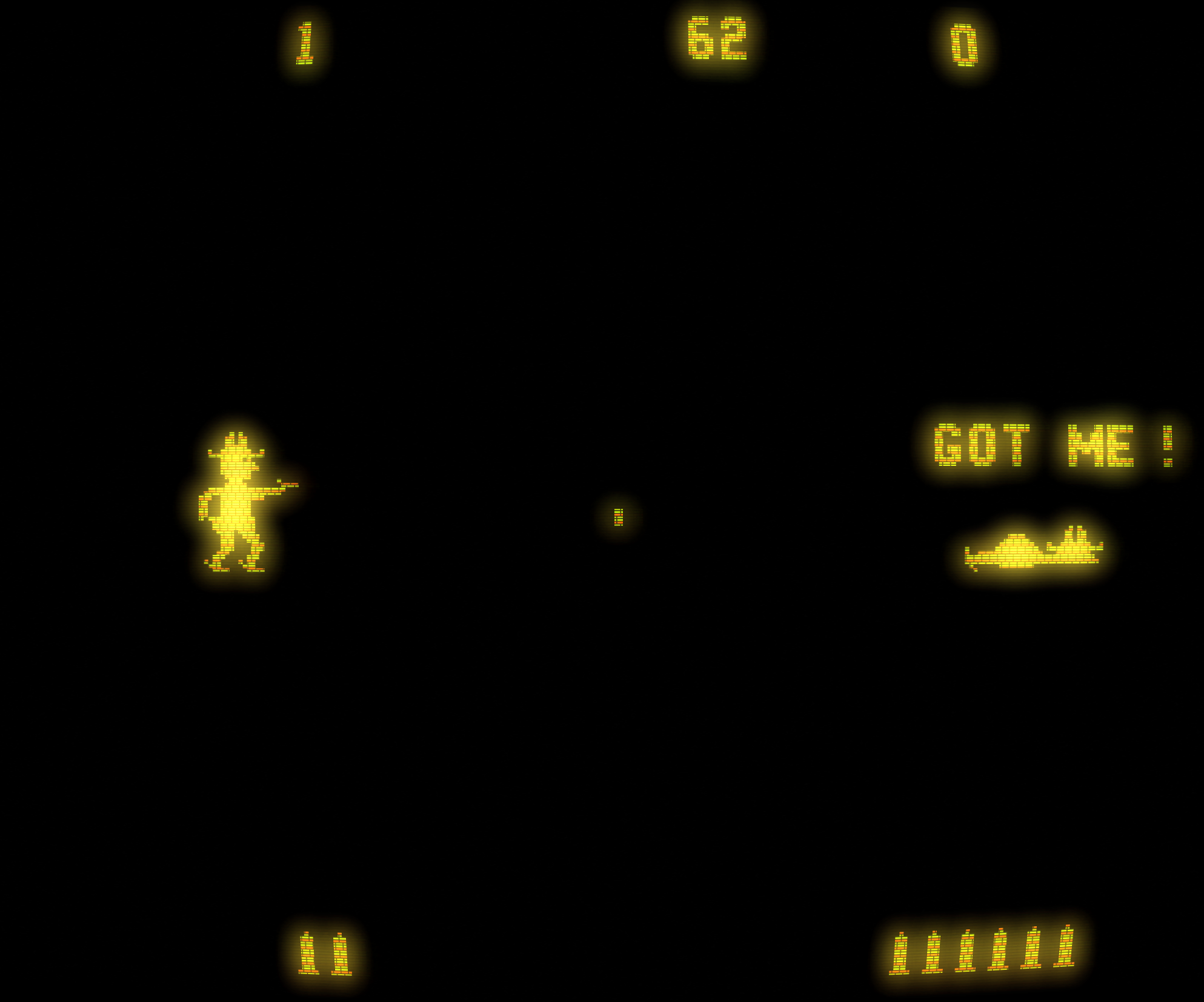
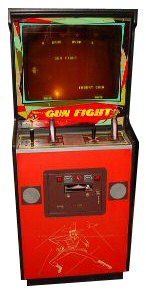 The Game: Grab yer guns and draw, sonny! You face off against another player, with only six bullets and plenty of obstacles in the way – a pesky cactus or two, a roaming covered wagon, and so on. Whoever lines his opponent’s belly with lead first wins the round, and the final victory goes to whoever wins the most rounds. (Midway, 1975)
The Game: Grab yer guns and draw, sonny! You face off against another player, with only six bullets and plenty of obstacles in the way – a pesky cactus or two, a roaming covered wagon, and so on. Whoever lines his opponent’s belly with lead first wins the round, and the final victory goes to whoever wins the most rounds. (Midway, 1975)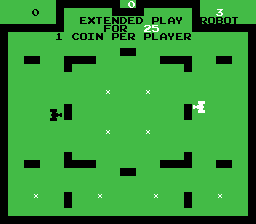 The Game: Two players each control a fearsome armored fighting vehicle on a field of battle littered with obstacles. The two tanks pursue each other around the screen, trying to line up the perfect shot without also presenting a perfect target if they miss. In accordance with the laws of ballistics and mass in the universe of Saturday morning cartoons, a tank hit by enemy fire is bounced around the screen, into nearby wall or mines, spinning at a very silly velocity, and battle begins anew. (Kee Games [Atari], 1974)
The Game: Two players each control a fearsome armored fighting vehicle on a field of battle littered with obstacles. The two tanks pursue each other around the screen, trying to line up the perfect shot without also presenting a perfect target if they miss. In accordance with the laws of ballistics and mass in the universe of Saturday morning cartoons, a tank hit by enemy fire is bounced around the screen, into nearby wall or mines, spinning at a very silly velocity, and battle begins anew. (Kee Games [Atari], 1974)
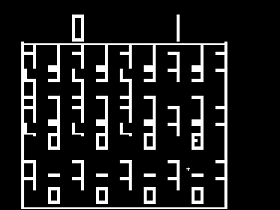 The Game: Two players – one represented by a roving square and the other by a plus sign – roam the ever-changing halls of a maze. The object of the game is for one player to catch the other before time runs out; however, the maze’s ability to constantly reconfigure itself isn’t going to make that easy. (Atari, 1974)
The Game: Two players – one represented by a roving square and the other by a plus sign – roam the ever-changing halls of a maze. The object of the game is for one player to catch the other before time runs out; however, the maze’s ability to constantly reconfigure itself isn’t going to make that easy. (Atari, 1974)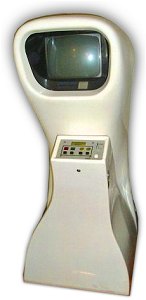 In the spring of 2007, amid some controversy and skepticism from the collecting community, a machine identified as the one and only white
In the spring of 2007, amid some controversy and skepticism from the collecting community, a machine identified as the one and only white 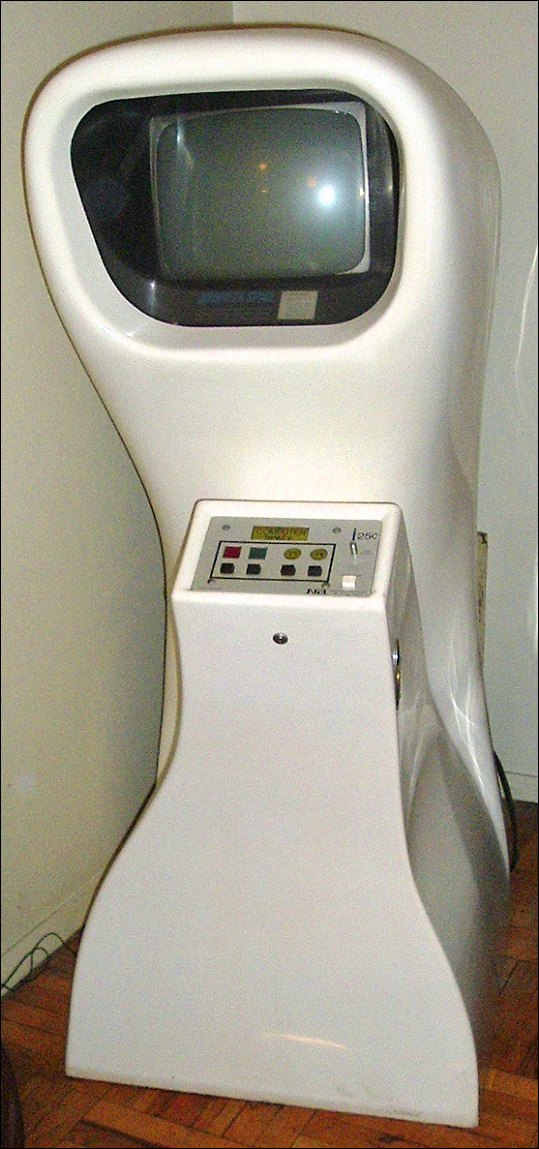
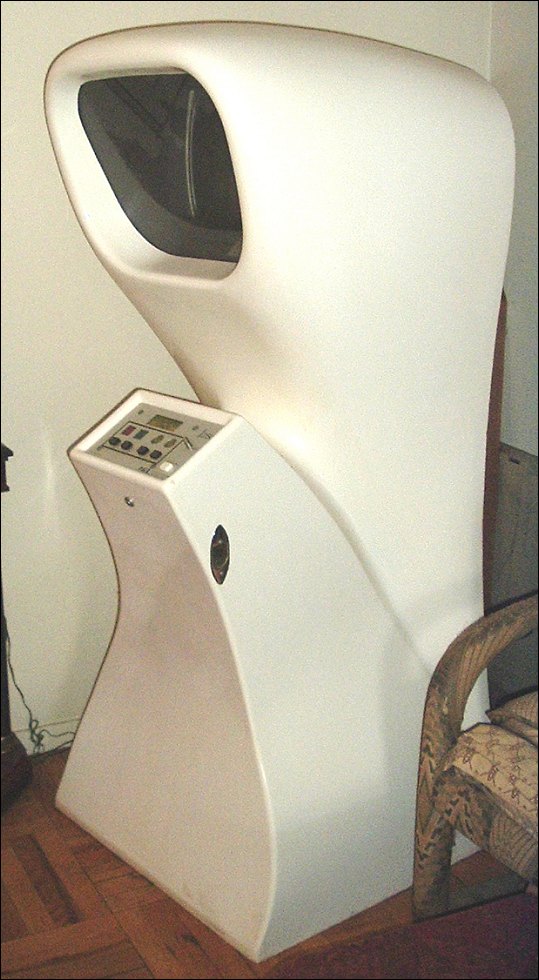
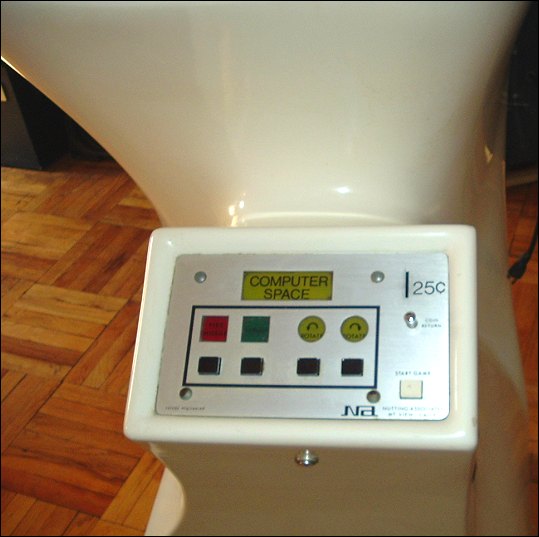
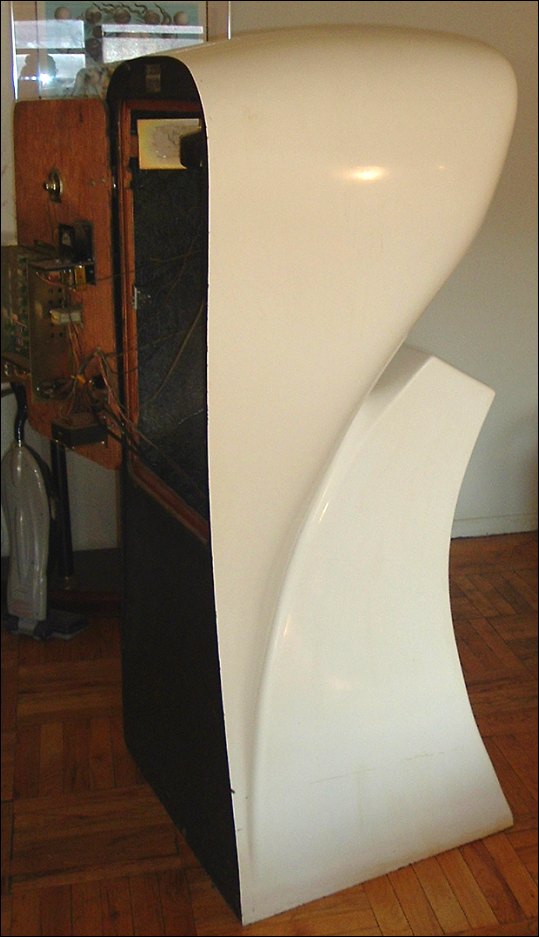
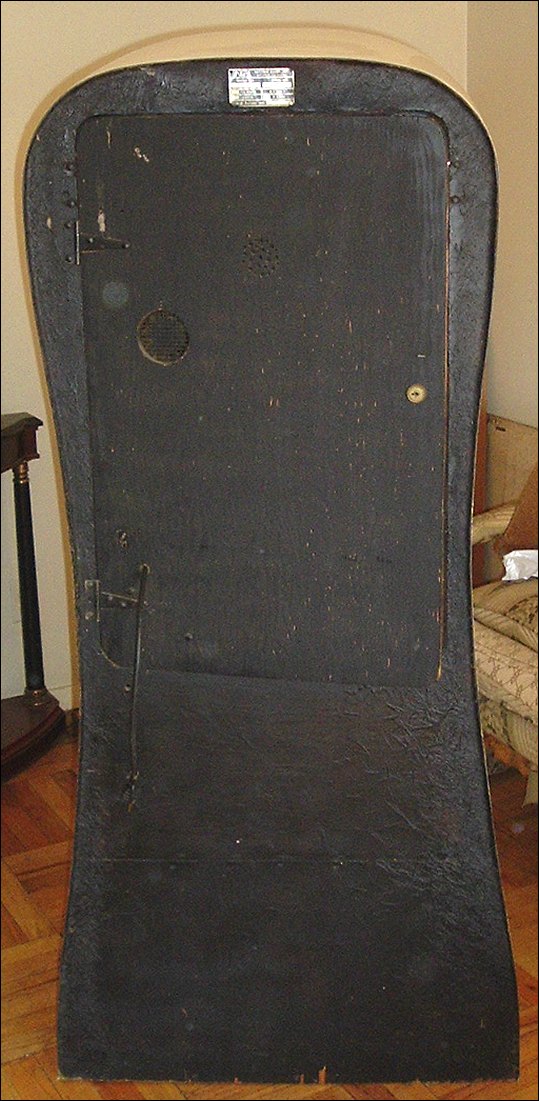
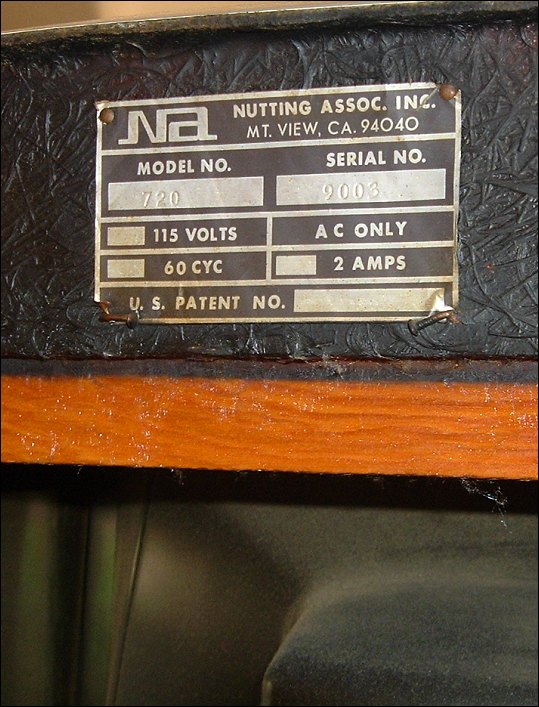
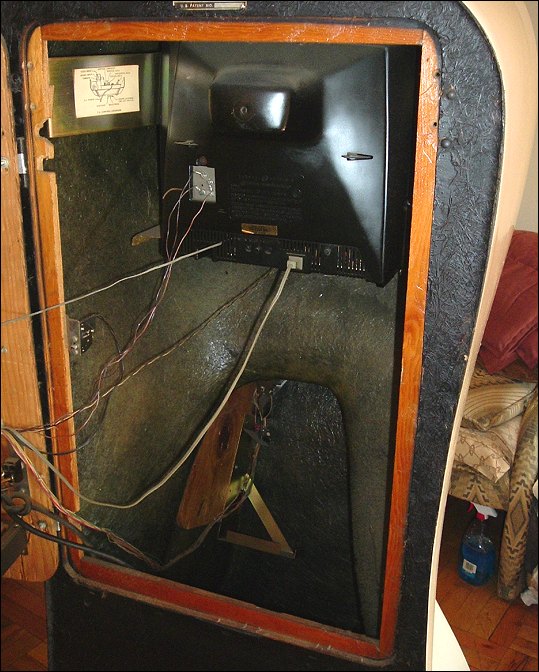
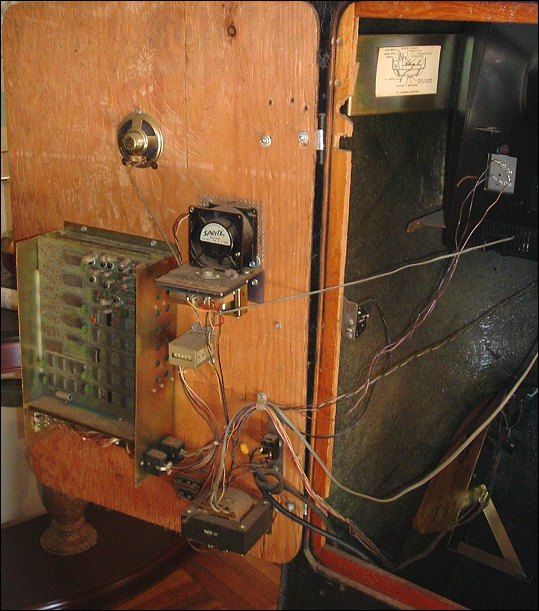
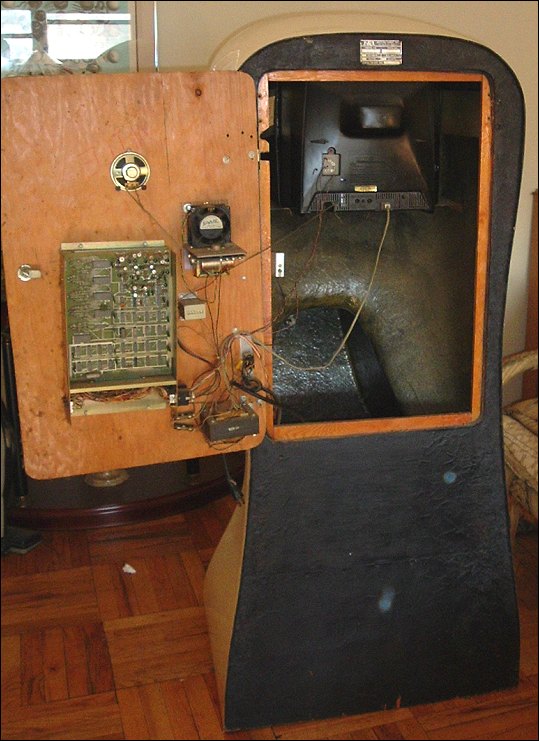
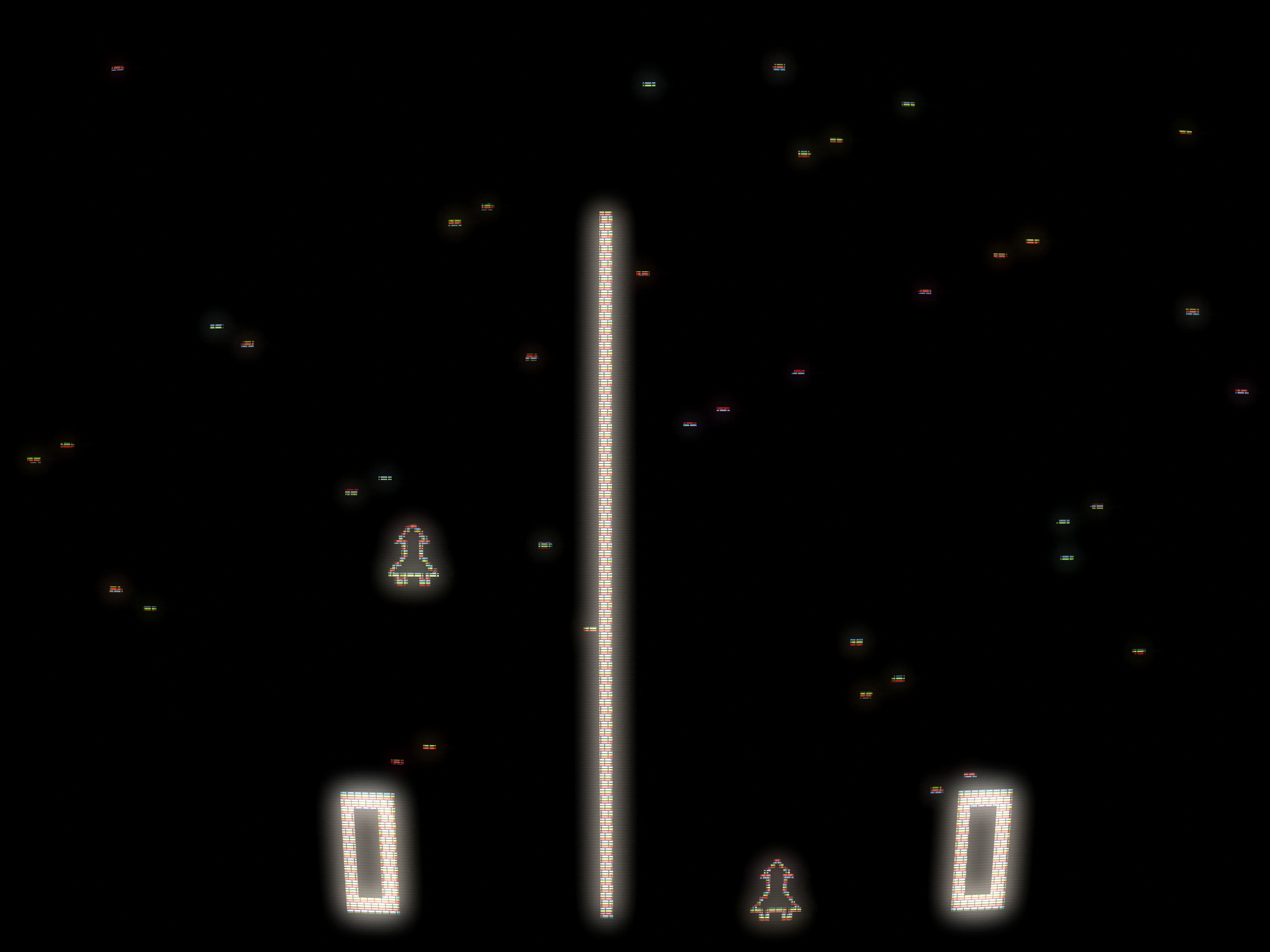
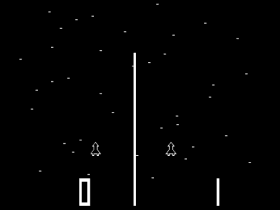 The Game: Two rockets stand ready to lift off for a race into space teeming with fast-moving asteroids and space debris. Collision with even the tiniest piece of space junk sends a player’s rocket back to the bottom of the screen, with a slight time penalty (possibly for repairs) before it can lift off again. A vertical line in the center of the screen serves not only to divide the screen into “lanes” for each rocket, but to count down the amount of time remaining in the game. Whoever has the highest score when time runs out is the winner of the space race. (Atari, 1973)
The Game: Two rockets stand ready to lift off for a race into space teeming with fast-moving asteroids and space debris. Collision with even the tiniest piece of space junk sends a player’s rocket back to the bottom of the screen, with a slight time penalty (possibly for repairs) before it can lift off again. A vertical line in the center of the screen serves not only to divide the screen into “lanes” for each rocket, but to count down the amount of time remaining in the game. Whoever has the highest score when time runs out is the winner of the space race. (Atari, 1973)